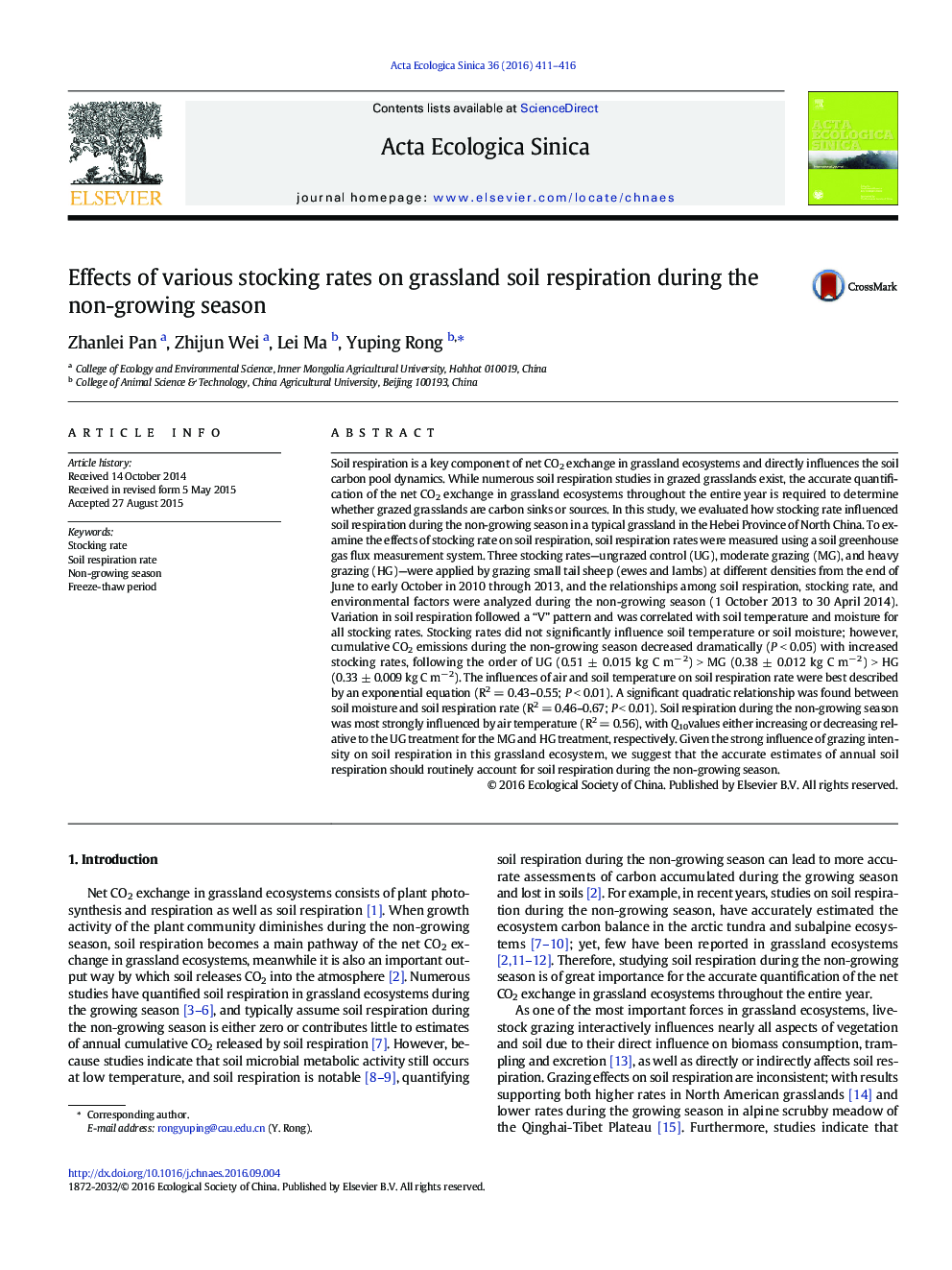| Article ID | Journal | Published Year | Pages | File Type |
|---|---|---|---|---|
| 8846410 | Acta Ecologica Sinica | 2016 | 6 Pages |
Abstract
Soil respiration is a key component of net CO2 exchange in grassland ecosystems and directly influences the soil carbon pool dynamics. While numerous soil respiration studies in grazed grasslands exist, the accurate quantification of the net CO2 exchange in grassland ecosystems throughout the entire year is required to determine whether grazed grasslands are carbon sinks or sources. In this study, we evaluated how stocking rate influenced soil respiration during the non-growing season in a typical grassland in the Hebei Province of North China. To examine the effects of stocking rate on soil respiration, soil respiration rates were measured using a soil greenhouse gas flux measurement system. Three stocking rates-ungrazed control (UG), moderate grazing (MG), and heavy grazing (HG)-were applied by grazing small tail sheep (ewes and lambs) at different densities from the end of June to early October in 2010 through 2013, and the relationships among soil respiration, stocking rate, and environmental factors were analyzed during the non-growing season (1 October 2013 to 30 April 2014). Variation in soil respiration followed a “V” pattern and was correlated with soil temperature and moisture for all stocking rates. Stocking rates did not significantly influence soil temperature or soil moisture; however, cumulative CO2 emissions during the non-growing season decreased dramatically (P < 0.05) with increased stocking rates, following the order of UG (0.51 ± 0.015 kg C mâ 2) > MG (0.38 ± 0.012 kg C mâ 2) > HG (0.33 ± 0.009 kg C mâ 2). The influences of air and soil temperature on soil respiration rate were best described by an exponential equation (R2 = 0.43-0.55; P < 0.01). A significant quadratic relationship was found between soil moisture and soil respiration rate (R2 = 0.46-0.67; P < 0.01). Soil respiration during the non-growing season was most strongly influenced by air temperature (R2 = 0.56), with Q10values either increasing or decreasing relative to the UG treatment for the MG and HG treatment, respectively. Given the strong influence of grazing intensity on soil respiration in this grassland ecosystem, we suggest that the accurate estimates of annual soil respiration should routinely account for soil respiration during the non-growing season.
Related Topics
Life Sciences
Agricultural and Biological Sciences
Ecology, Evolution, Behavior and Systematics
Authors
Zhanlei Pan, Zhijun Wei, Lei Ma, Yuping Rong,
